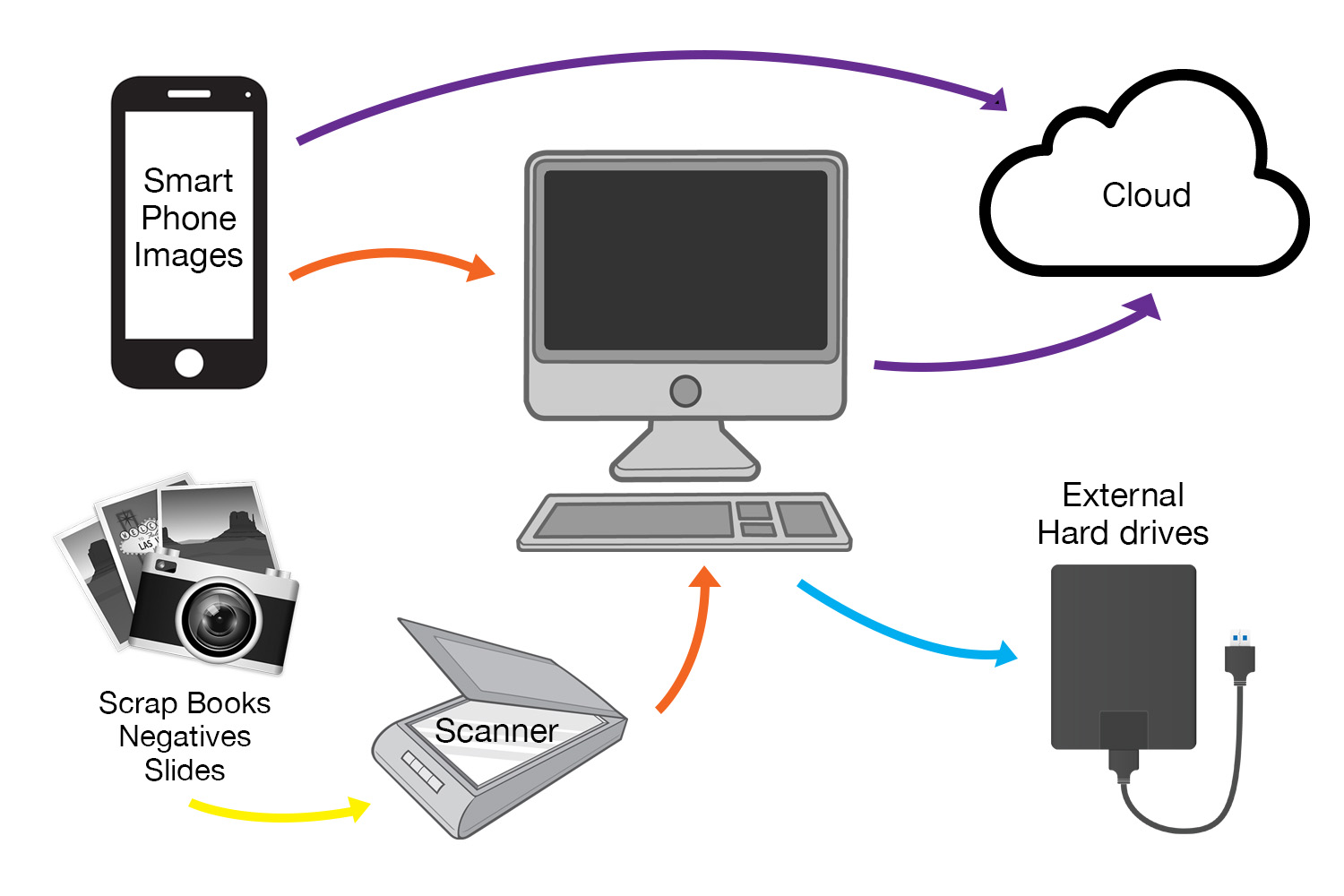How to Protect Your Images
It all starts with a gasp. A tightening of the chest, prickly skin, perhaps even a cold sweat.
No!
What happened to my images?
If you are like me, your smartphone is never far from your hand and you take pictures daily. Sometimes it’s just a shot of a pretty flower or interesting shadow. Other times it’s something you don’t want to miss, a reunion with friends, a child’s first step. Whatever the images on your phone, they are important and precious. What if your phone suddenly died? What if you no longer could view your images? It’s almost incomprehensible. Not to worry, there are simple ways to protect your images from loss.
The most important thing when it comes to your images is to make sure they are backed up to some device other than your phone. Phones get stolen, they get lost, and yes, they get dropped into toilets.
I have been a photographer since I was 15. I have taken many, many photos. You would think that I had my process down pat and that I was a paragon of virtue when it comes to backing up my images. Nope. I also get distracted by life and I put off the simple tasks well, because I would rather be out shooting. But I also know that it has to be done, so I make the time.
If you are ready to move forward, as the diagram below shows, it starts with getting your images onto your computer and the cloud.

- Make sure the images on your phone are backed up to either the cloud or your computer.
- Collect all your digital images from SD cards, hard drives and old computers and put them on a primary reliable computer.
- Scan all prints and slides from the era before digital and add the files to your primary computer.
- Back up all your digital images to your cloud account.
- Save a copy of all your digital files to one or two external hard drives. Regularly update these hard drives. Store a hard drive off site, either a bank vault or a friends place.
Whew!
But before you pull a Flaming Elmo or run away, keep in mind that the extent of your photo management process depends on how you take pictures.
I like to think that there are three different types of photographers. I call them the Socialite, the Adventurer, and the Pro.
The Socialite
The Socialite likes to record her social activities and share them on social media but she doesn’t use any other type of camera. She may have photo albums from the distant past when she used a film or digital camera.
For the Socialite, making sure her images are backed up to the cloud and keeping a copy on her computer is a good start. Most importantly, if she doesn’t have a copy of all her images on her computer or the cloud and only has a version on social media platforms, she needs to download her images asap. We don’t know how long the social media platforms will be around so we all need to make sure we have our own copies of images we want to keep on our own devices.
The Adventurer
The Adventurer takes pictures with her phone but she also has a digital camera and she travels with both. Sometimes she has hundreds if not thousands of images to deal with after her vacation. If she was organized in the past, she has many scrapbooks to show for her travels.
She needs to gather all of her images onto her computer. She needs to copy her SD cards and scan her historical images into digital format. Once all her images are in the same place she can rename and organize them. From there she should save a copy to the cloud as well as an external hard drive.
There are many types of Adventurers and that will determine what software they use to manage their photos and how many places they back up their files. Some options are Photo Mechanic, Adobe Lightroom, and ACDSee.
The Pro
The Pro already knows what to do and most liketly isn’t reading this article. They are the Adventurer x10 and because they shoot for clients, there are legal and security protocols built into their process for managing photos. However, just like the Socialite, any images they took with their phone will need to be backed up in the same way.
Whatever type of photographer you are, the fundamentals don’t change when it comes to protecting your images. We all need to back up our photos to one or more places other than our phones to make sure they are safe.


